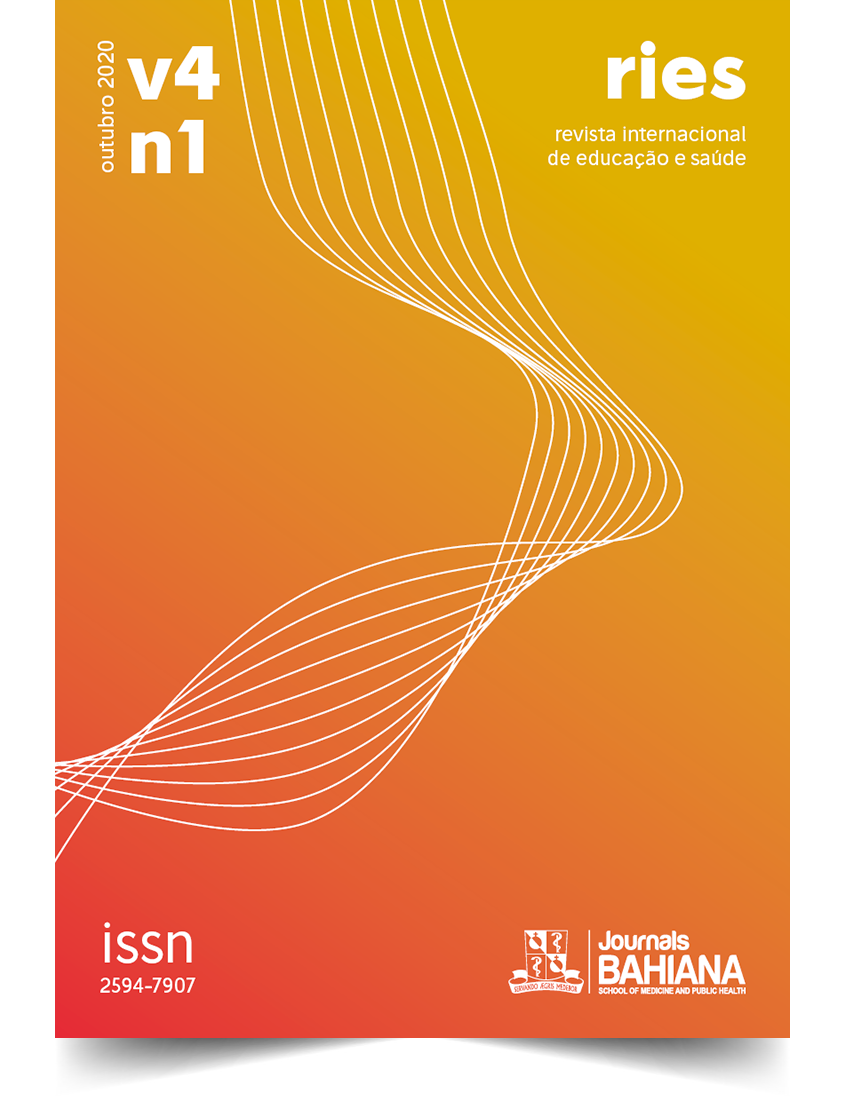Percurso do estudante de medicina na formação da identidade profissional desde o curso médio até o meio do curso
DOI:
https://doi.org/10.17267/2594-7907ijhe.v4i1.2640Palavras-chave:
Educação médica. Identidade profissional. Estudante de medicina. Currículo.Resumo
INTRODUÇÃO: Em seu percurso, os estudantes encontram nos primeiros anos da faculdade, a influência principalmente das disciplinas humanísticas e experiência com professores. Até o segundo ano, o estudante do ciclo básico passa por frustrações diante das expectativas criadas anteriormente ao ingresso da faculdade. Eles constroem identidades profissionais a partir dos discursos concorrentes de diversidade e padronização; usam e negociam esses discursos de maneira diferente e experimentam o processo de construção de maneira diferente, dependendo de suas identidades sociais únicas; e, como resultado, eles constroem diferentes tipos de identidades profissionais. OBJETIVO: Investigar o percurso do estudante na formação da identidade profissional desde curso médio até o meio do curso de medicina, em uma instituição privada de Salvador/BA. METODOLOGIA: Estudo de corte transversal, observacional, de abordagem quantitativa/qualitativa. Alunos no 5º e 6º semestres de medicina, de 2019.1. Questionário aplicado presencialmente. Análise estatística descritiva, programa IBM SPSS Statistics20.0. As variáveis numéricas foram analisadas seguindo as tendências central e de dispersão. A análise qualitativa pela análise do conteúdo. Aprovado no CEP com o CAAE 03547118.6.0000.5544. RESULTADOS: Foram respondidos197 questionários. Média de idade de 21,86 +/- 2,3; são do sexo feminino 111 (56,3%) estudantes; 88 (44,7%) católicos; 99 (50,3%) do 5º semestre e 98 (49,7%) do 6º semestre; todos são solteiros, 197 (100%); 130 (69%) moram com os pais; 84 (93,4%) sem formação profissional prévia. Tempo médio de curso pré-vestibular de 1,21 anos (DP +/- 1,03); 181 (91,9%) participam de alguma atividade extracurricular; 137 (69,4%) responderam vocação como motivação para fazer medicina; 190 (96,4%) participantes responderam que houve mudança na maneira de pensar e agir diante do paciente e de questões humanísticas; 161 (81,7%) responderam que as expectativas foram atendidas pelo curso; 120 (60,9%) responderam não se sentem desmotivados, culpados ou com vergonha quando falham durante a prática clínica. 190 (96,4%) percebem a influência do professor na sua formação; 186 (94,4%) percebem conteúdo humanístico no currículo;99 (50,3%) concordaram fortemente que há competitividade dentro do curso; 94 (47,7%) concordam fortemente e 72 (36,5%) concordam que se sentem “mais médico” após o início das práticas clínicas/ hospitalares. Concordaram fortemente 34 (17,3%), 35 (17,8%) concordaram e 73 (37,1%) concordaram em parte que sentem usar o paciente como objeto; 89 (45,2%) concordam fortemente e 80 (40,6%) concordam que a escolha por uma especialidade pode ser influenciada por um professor/médico/mentor; 43 (21,8%) dos participantes concordaram fortemente que há influencia no modo de se comportar e vestir, 69 (35%) concordaram com a afirmativa. CONCLUSÃO: É possível inferir que os estudantes entram no curso muito jovens e sem alguma experiência no ambiente de ensino superior. A vocação como motivação seguida do desejo do conhecimento e da influência de pais e família, apontam para o lado humanístico na escolha do curso, apontando também as influências do currículo oculto como o desejo da família e a presença de um familiar exercendo a profissão. Existe satisfação com o ingresso no curso, com as experiências vividas e como elas transformaram de uma maneira positiva os estudantes: a proximidade com o paciente, o currículo, o professor.



